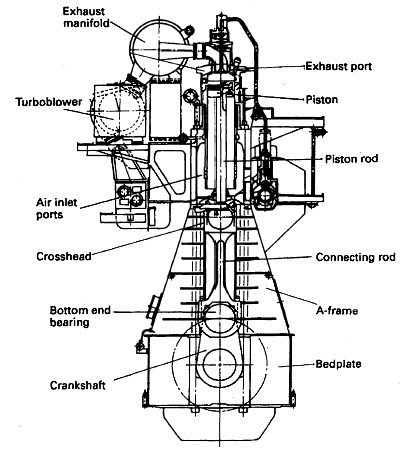
Two-stroke Cycle Marine Diesel Engine
The two-stroke cycle is completed in two strokes of the piston or one
revolution of the crankshaft. In order to operate this cycle where each
event is accomplished in a very short time, the engine requires a number
of special arrangements. First, the fresh air must be forced in under
pressure. The incoming air is used to clean out or scavenge the exhaust gases and then to fill or charge the space with fresh air. Instead of valves
holes, known as 'ports', are used which are opened and closed by the
sides of the piston as it moves.



